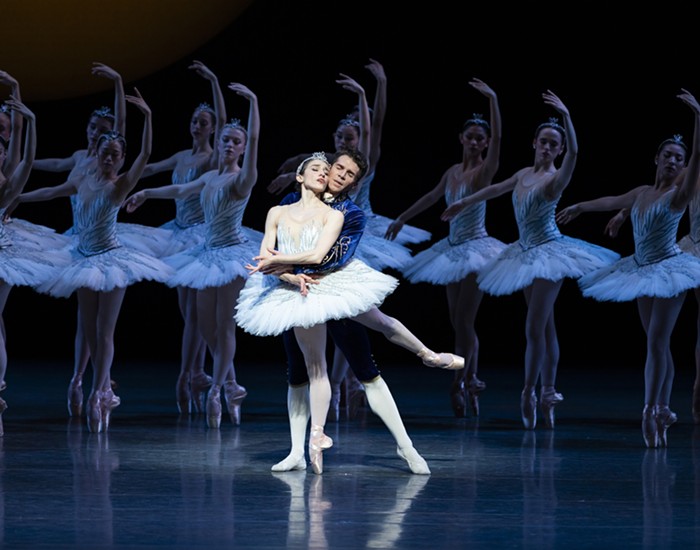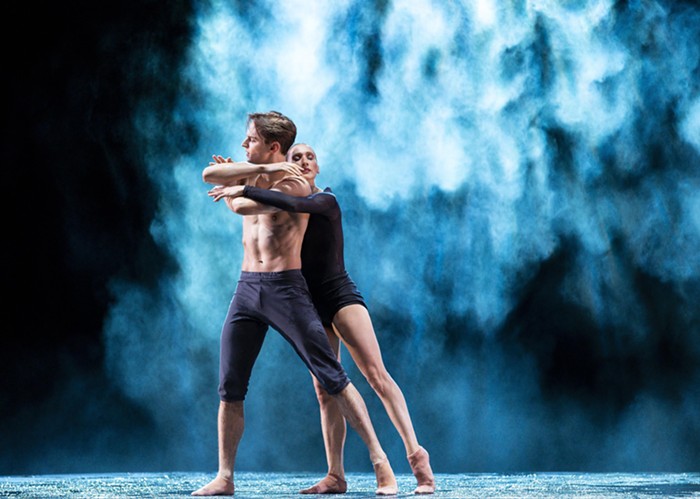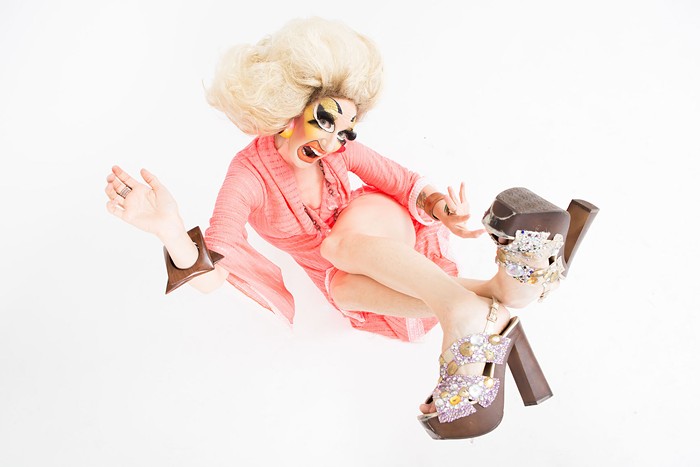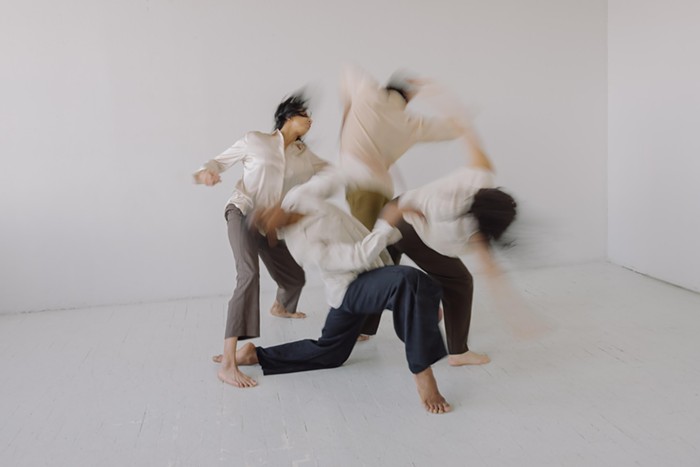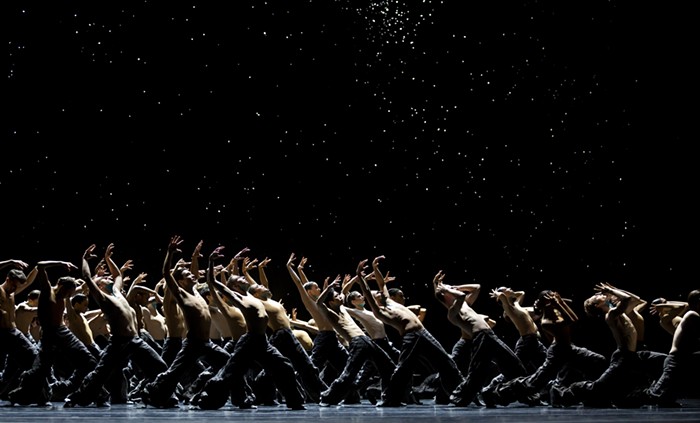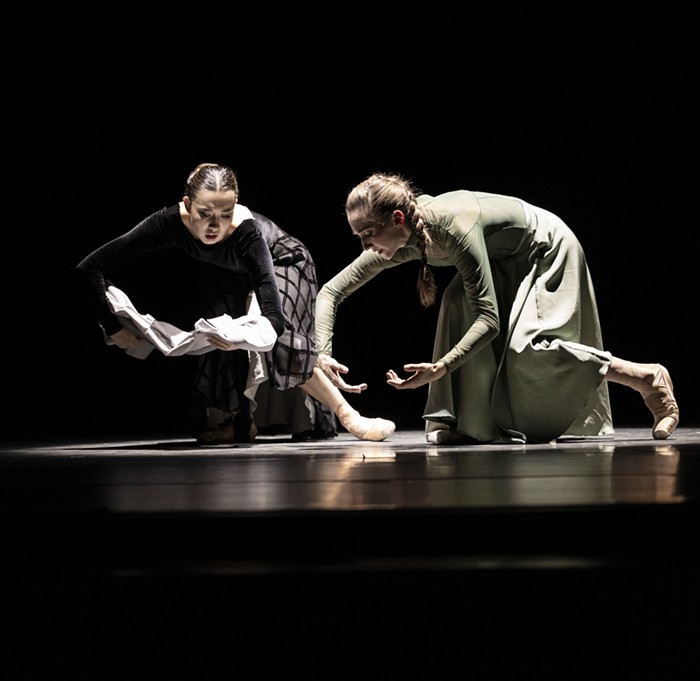
It's rare to crack up at a dance performance. It's even more rare to crack up during a dance performance about dismantling the patriarchy and white supremacy. But the audience let out big, embarrassing belly laughs at Boys in Trouble, an autobiographical performance piece that Sean Dorsey Dance company is touring around the country. The show had its Seattle premiere Thursday night at Velocity, and runs through the weekend. Do yourself a favor and pick up tickets.
Boys in Trouble is equal parts Saturday Night Live skit and contemporary dance performance. Dorsey's skits—clever, cartoonish, and full of irony—tackle various issues facing trans men in particular and other "gentleman traitors" in general.
In an early bit about not fitting in even among queer men, for instance, one dancer tries to impress the group by jokingly showing off how hard he failed to live up to heteronormative standards in school, asking, "Who's the only guy in school filling his notebook with rainbow stickers?!!" The four other queer dancers onstage heartily cheer and flex. Then Dorsey steps up into the spotlight and asks, "Who's the only guy in his graduating class buying Maxi Pads?!" Silence.
Dorsey balances the abundance of humor with an equal amount of poignant storytelling. As he dances, he delivers powerful monologues about all the unnecessary violence and confusion that result from fiercely upholding bullshit gender norms. Most of the stories and skits end on a question or a resonant phrase, which the five dancers then deepen or answer in a group dance.
In the second half of the performance, Dorsey cedes the spotlight to the other dancers—introduced as a black bi man, a black gay man, a white gay father, and a white gay man—each of whom explore their own struggle to live up to impossible standards of masculinity. Here, the dancers use story and movement to show how racism and white fragility limit access, they say jokingly, to the patriarchy's clubhouse.
Throughout the show the movement vocabulary is as diverse as the men onstage, borrowing from ballet, contemporary, the dance floor, and music video.
In the end, Dorsey, by way of a line of thinking I know from James Baldwin, wonders what heteronormative men could become if they stopped defining their masculinity in relation to fem, queer, and trans men. He imagines a future where we could strip gender markers from gendered human traits—strength, confidence, etc.—and embrace difference with the same tenacity men use to point it out.

